It’s hard to imagine that once upon a time Detroit’s Coleman A. Young International Airport was one of the US’s busiest hubs.
This was at a time when Detroit held the proud moniker of Motor City on account of its production of automobiles for General Motors, Ford and Chrysler. Detroit was, of course, also famously home to the Motown music label.
These were the halcyon days before Detroit’s infamous decline through the loss of hard industry and people – its population has declined by over 60% since 1951. The ultimate ignominy came in 2013 when the city was forced to file for bankruptcy thanks to years of debts and municipal mismanagement.
In the meantime, Detroit Airport has been allowed to fall into rack and ruin – an apt reflection of the city’s wider fate – and it was notably included as an asset with the option to sell to cover Detroit’s debts during the bankruptcy filing five years ago.
Both Southwest Airlines and Pro Air once operated Boeing 737s from the airfield, but today the airport has no scheduled passenger services, serving primarily private jets and corporate aviation. Such is Detroit Airport’s lowly standing, it doesn’t even have its own website, and its number of employees totals just 200.
Aerial view day and night. Image: The Red Sea Development Company
Image: The Red Sea Development Company
behind the red sea resort project
The Kingdom of Saudi Arabia is looking to modernise itself and raise its appeal among international travellers. In 2016, Crown Prince Mohammad bin Salman unveiled his Saudi Vision 2030 initiative, saying it was an “ambitious yet achievable blueprint”. The goal of the initiative was to cut the Kingdom’s dependence on oil and diversify its economy.
As well as modernising infrastructure, introducing some cultural reforms, rejuvenate the public sector and open the country to foreign investment in a way that had not previously been done, foreign tourism was also in its sights; the Red Sea Resort project is part of that endeavour.
Spanning a staggering 28,000km2 along the Kingdom’s west coast, the project’s developers say the luxury destination will encompass mountain canyons, dormant volcanoes, ancient cultural and heritage sites, and a vast archipelago of more than 90 islands.
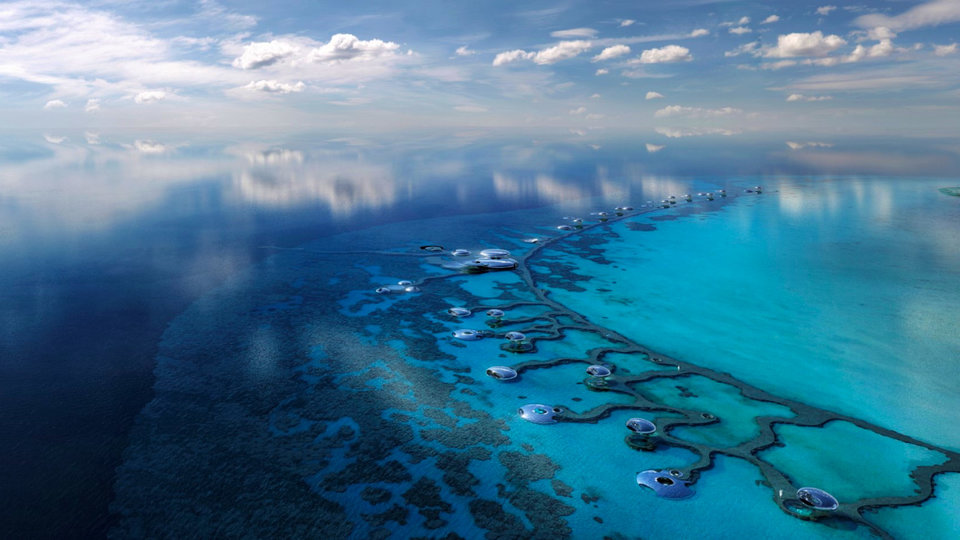
Image: The Red Sea Development Company
A global airport for a coastal village
The Coastal Village will be home to thousands of workers employed at the resort. It will also play host to guests during their stay, although it is not the only area designated for tourists.
The resort will offer tourists an opportunity to experience the culture, enjoy the landscape and take in the unique nature of the region, all year round. It is just 13 hours flying time from North America, eight from East Asia and only seven hours from Western Europe. It is described by developers as sitting at the crossroads of Europe, Asia and Africa, with 250 million potential visitors no more than three hours away by air.
If the project is to enjoy success, the area must have a modern airport that can cope with the anticipated one million visitors annually. After securing the contract to design the airport, UK-based architects Foster + Partners revealed its plans for the site in November 2019.
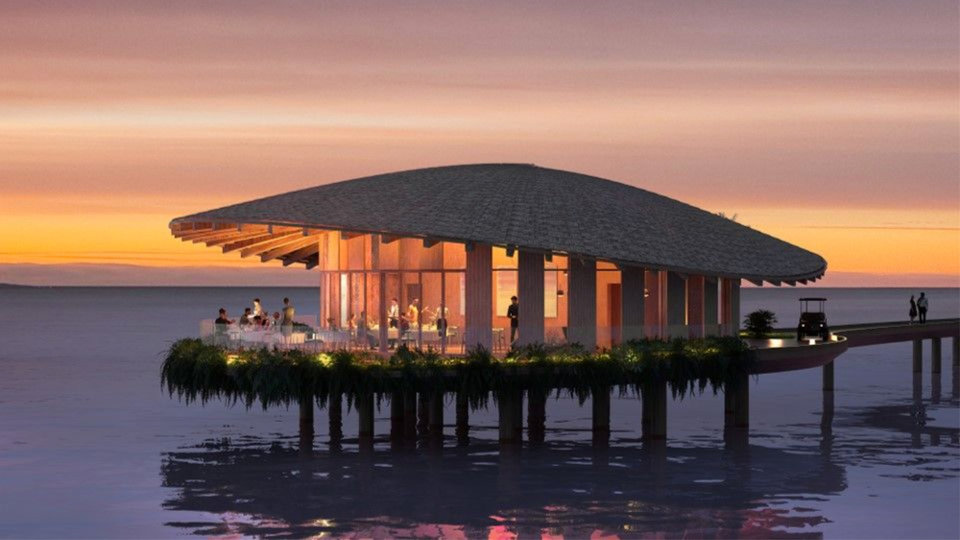
Image: The Red Sea Development Company
Taking inspiration from the landscape
Foster + Partners says the terminal’s design will offer the experience of a private aircraft terminal by providing “smaller, intimate spaces that feel luxurious and personalised”.
In a statement following the publication of its design plans, Foster + Partners head of studio Gerard Evenden said: “The Red Sea Airport has been envisaged as a gateway to one of the most unique resorts in the world, and an integral part of the visitor experience.”
The plans are heavily influenced by the facility’s natural surroundings, encompassing the colours and textures of the landscape in a sustainable concept based around locally sourced materials. The site will be fully powered by renewable energy and welcome visitors by both land and air.
Taking inspiration from the surrounding desert dunes, outside the terminal passengers will be able to shade from the annual 360 days of sunshine both land and airside thanks to specially designed cantilevers. Within the airport, the designers have made extensive use of natural ventilation to reduce the need for air conditioning.
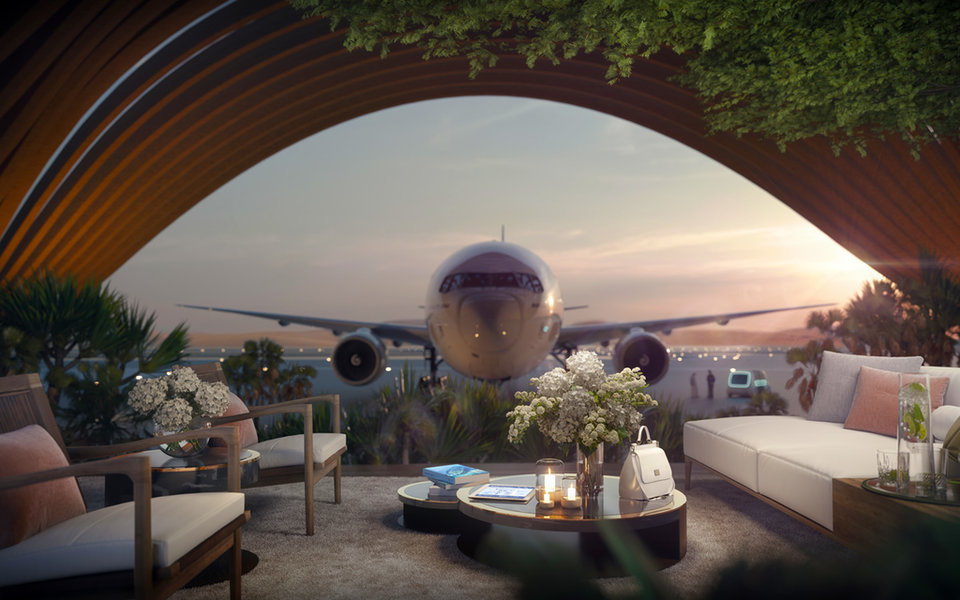
Image: Foster + Partners
The Red Sea International Airport
The Red Sea International Airport is designed to complement the natural beauty of its desert surroundings.
In July 2020, the Red Sea Development Company announced it had awarded its biggest contract yet. It said that, following a competitive process, Nesma & Partners Contracting and Almabani General Contractors were to work together on the construction of the airport’s infrastructure, including runways, parallel and link taxiways, pavements, roads and buildings.
Both outside and inside, the airport will use some of the latest smart technologies to make visitor’s journeys both relaxing and as efficient as possible. Evenden added: “The design challenges have mainly revolved around creating passenger comfort without increasing energy use… We also have been able to reduce passenger waiting times, taking them directly through the terminal without affecting security protocols.”
When arriving, passengers are guided to a Welcome Centre where they are treated to an immersive glimpse of what their stay might have in store. There’s no need to wait around for those eager to get going; luggage is sent directly to hotel rooms eliminating wait times in baggage collection.
At the end of their stay, guests will have their luggage taken directly from the hotel, checked in and loaded onto their flight without them needing to do a thing, except sit back and enjoy their surroundings. While in the departure lounge, they can take time to enjoy the offerings of its restaurants, relax in a spa or take a moment in the oasis garden.
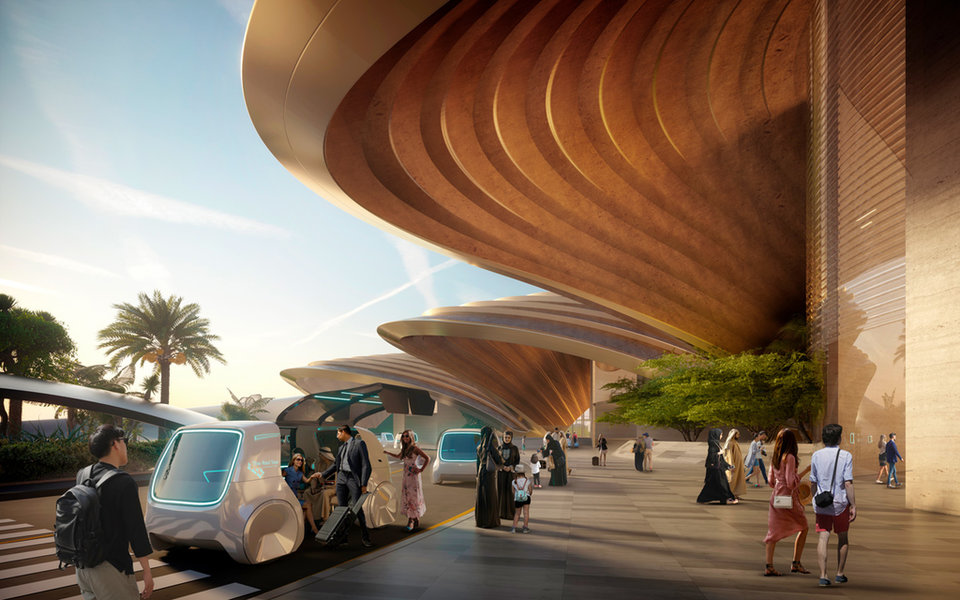
Image: Foster + Partners
Oasis garden: recreating the resort's atmosphere
The internal garden is a “green oasis with an indigenously planted garden that forms a green focus, creating a relaxed, resort-like atmosphere within the airport terminal”, according to Foster + Partners.
Situated around five departure suites or pods, the lounge has been designed to help passengers relax ahead of their journey. The area is more spacious as passengers will spend more time in the airport’s departure lounge than in arrivals. Customers will also benefit from an easy transition from car (upon arrival at the airport) to plane.
There is a lot riding on this ambitious project, which is expected to add almost $6bn annually to the Kingdom’s economy. The airport, which will have the capacity for 900 passengers per hour, is a critical element to its success.
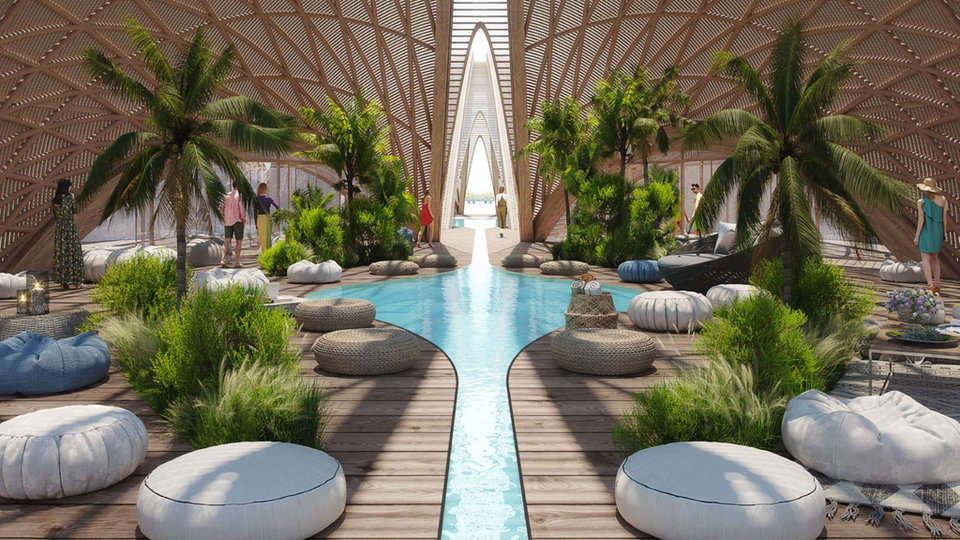
Image: The Red Sea Development Company